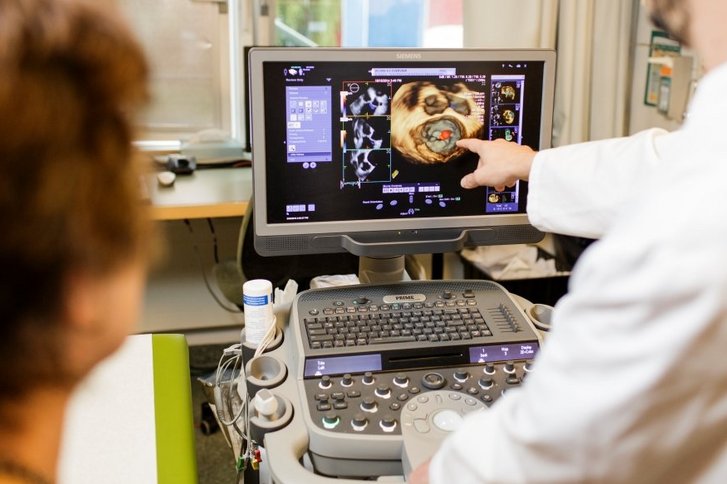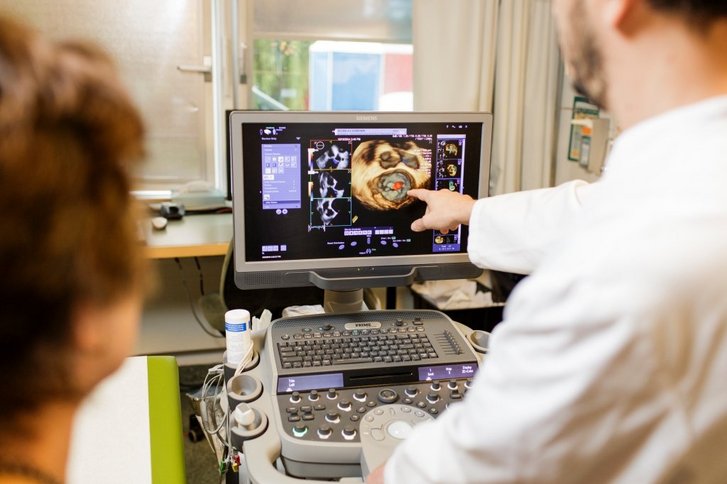In echocardiography in particular, which is also called heart ultrasound, a distinction is drawn between two procedures, depending on the form the treatment takes. These procedures are used in different fields and supply different types of result. We will introduce you to them here, and tell you how your treatment can benefit from them.
Transesophageal echocardiography (TEE)
Transesophageal echocardiography generates images of your heart from your esophagus or stomach. Cardiac structures which cannot be seen from outside the body can be evaluated and examined more effectively using this method. The procedure is often used for such conditions as heart valve defects, diseases of the heart muscle or heart failure. The use of TEE enables our specialists to view the left atrial auricle, monitor the heart valves, identify the accumulation of fluid, exclude the possibility of blood clots, and investigate suspected endocarditis.
Transthoracic echocardiography (TTE)
Echocardiography through the chest, i.e. from outside the body, is a different and rather more simple procedure, which is also more frequently used. With transthoracic echocardiography, the heart is viewed from a number of angles. Not only is this a more simple procedure than TEE; it is also less time-consuming. But it is best suited for examining the heart cavities and for assessing cardiac and valve function. It is used, for instance, to detect blood clots inside the heart.

